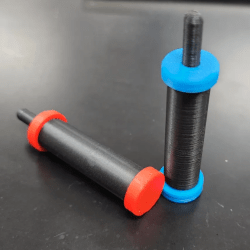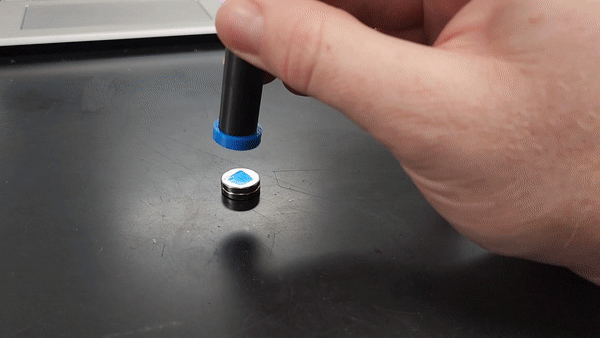I’m sure we can all agree that the worst time to find out a magnet is the wrong way around is after glue has been applied. With that in mind, [erick.siders] created the parametric Magnet Placer tool.

Picking up and placing magnets into assemblies can be an error-prone process, because magnet polarity cannot be directly identified or sensed by either sight or fingertips. This tool helps by acting a lot like a suction pickup tool — press the plunger down, and a magnet can be picked up, release the plunger, and the magnet lets go. Simple, and effective.
Since the tool is polarity-dependent (depending on which orientation the pickup magnet is mounted into the internal plunger), [erick.siders] suggests printing two tools and color-coding them. That way, one can choose the right tool based on the situation and be confident that the magnets are right-side-up, every time.
The tools use a long metric bolt, a magnet, and a spring, but none of those parts are particularly critical. We also love the way that the end result has no gaps or openings into the moving parts, which means nothing can get caught on or inside anything during use or storage.
It’s a parametric design and the CAD files (in both Fusion 360 and STEP flavors) are provided, so modification should be a breeze. And if you happen to be using PrusaSlicer, remember you can now drop STEP format files directly in for slicing.
















Magnet polarities are wonderfully confusing. Red is N which is “north-seeking”. By convention magnetic field direction is N to S, i.e. red to blue. I guess that is a nice analog to electric field going from red + to blue -.
But then you start thinking how Earth’s north pole is S, and soon you won’t remember which side of battery is the cathode!
Give it a while and the Earth will flip, then it’ll make better sense
I need to start selling “Catastrophic Magnetic Pole Reversal Survival Kits”, which would consist of a fine paintbrush and two very tiny pots of red and blue paint.
I’d probably glue a magnet onto my fingernail with nailpolish to add magnet field polarity sensing capability to my fingers.
Genius. Seems more reasonable than those people who get one as a dermal implant
Couldnt one also detect with an air core, DC powered electromagnet?
This solution is much much simpler than using an electromagnet. Maybe it could be improved by using a slider on the side so if you push it one way, one end has a set polarity and if you push the slider the other way, the other end has the opposite polarity.
Brilliant! I really need one of these to more easily assemble 3D printed fridge magnets.
Does the polarity really matter with fridge magnets?
Exactly why I was web surfing. The real trick is very small magnets and keeping the polarity in mind. I have a project that uses magnets to hold things together. It would be nice to do it right the first time.
Also, since I am apparently able to attract glue to my finger tips from 10ft away, I need a easy placement device. This looks to be perfect.